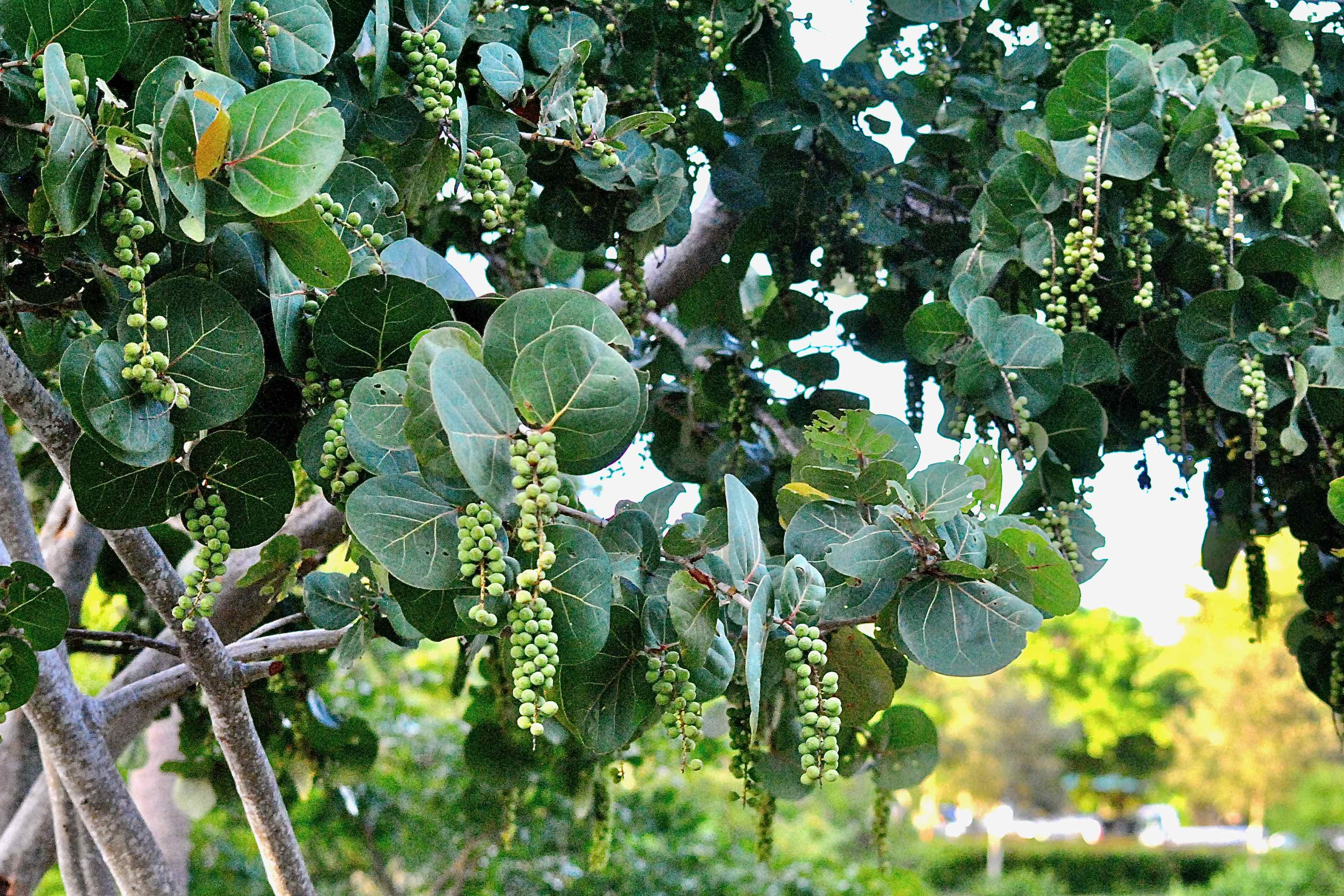
Sea grape, photographed at Lake Ida Park, Delray Beach, Palm Beach County, in August 2013.
They do look like grapes, don't they? Well actually sea grapes, Coccoloba uvifera, isn't even remotely related to grapes. They are the iconic tree of sand dunes and beaches throughout Central and South Florida and more closely related to buckwheat, believe it or not.
Sea grapes are native to coastal parts of Florida as far north as Volusia County on the Atlantic side and Pinellas County along the Gulf. It is also native to one county in Mississippi. It is an introduced plant in Hawaii and the Pacific Basin as far away as the Philippines. They're also native to the Caribbean, Mexico, Central America and South America.
They can look shrubby near the coast, but get away from the salt and salt spray and the sea grape can become a substantial tree reaching 50 feet in height or more. It can be multi-stemmed or have a single trunk as large as two feet in diameter. In either case, sea grape can be sprawling, as wide or wider as it is tall.
In winter, sea grape produces small white fragrant flowers along foot-long spikes called racemes. By summer, bunches of green fruit appear that look a lot like table grapes.
When ripe, they'll turn red and they'll be food for birds, squirrels and other wild life. The fruit is edible for us humans, and is used to make jelly and wine or eaten raw. Just like grapes.
The flowers are also rich in nectar and attract honey bees. Sea grapes are either male or female, with only the female bearing fruit. Sea grape leaves are heart-shaped at the base and have prominent red veins. The whole leaf can turn red before it falls; new vegetation is bronze colored.
Sea grape flowers also attract warblers, hummingbirds and other feathered friends looking to fuel up during their annual migrations.
Sea grape is widely grown for landscaping uses, either as a specimen tree, a barrier or as a hedge. It is extremely salt-tolerant, making it ideal along the coast. The sap is rich in tannins, and has been used to process leather and to make dyes, and medicinally as an astringent (stops bleeding). Parts of the plant have been used in traditional medicine as remedies for a host of conditions internally and externaly, including dystenery, hemmorrhages, veneral disease, and to clean wounds. Studies have found sea grape to have antiseptic, antifungal, antitumor and anti-inflammatory properties and more. Extracts have been shown to be effective against staph, E. coli, and salmonella.
Sea grape is one of the few trees that are members of Polygonaceae, the buckwheat family. Other names: seaside grape and bay grape, Alternate spellings include sea-grape and seagrape.



